It’s not hard to determine that my favorite genre of game is the platformer. Especially in tough times such as these, I love jumping into something that simply asks for the player’s reflexes. The comparative merits of 2D and 3D styles of platforming have been endlessly debated. Both are great! However, a period in history that has always interested me is the overlap between them. As 3D technology began to dominate the industry, many studios sought to push the boundaries of gameplay possibilities. Meanwhile, others took an approach of using this technology to augment tried and true 2D gameplay. Here, I will look at three platformers from the period, examine their ambitions, and determine where they went right and wrong.
Ape Escape
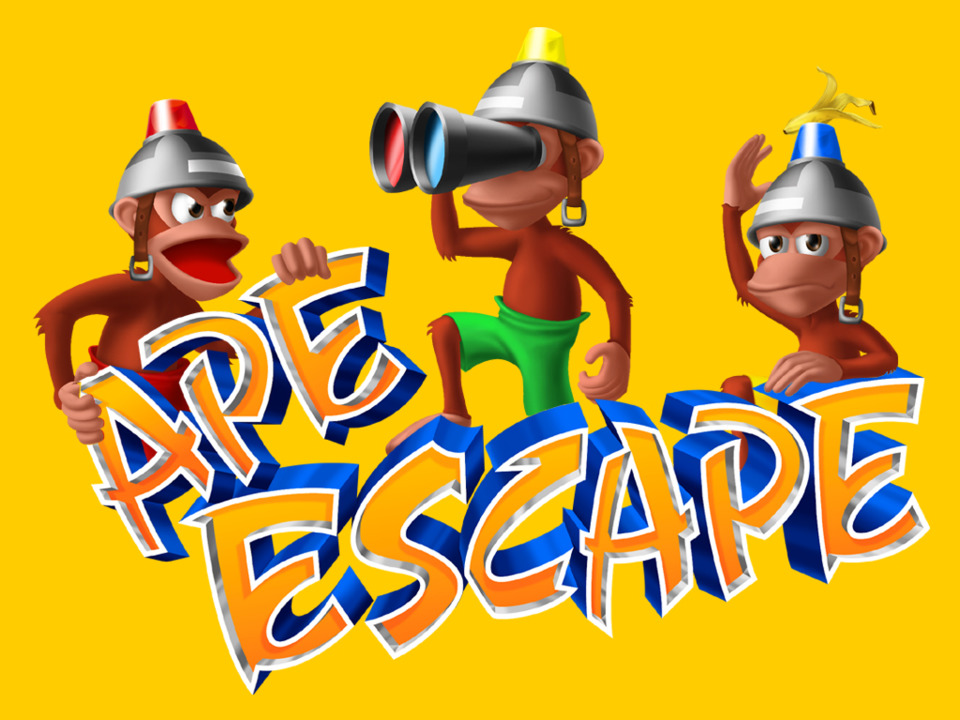
As one of the PlayStation brand’s historic franchises, Ape Escape still has fans hoping for a modern revival. I hadn’t played the game until now, but its charm is outwardly inviting. The presentation is cartoonishly bright with enough style to appeal to older kids. It all represents what the ESRB would call Comic Mischief, which permeates the entire game.

Mascot platformers such as these depend on simple, yet expressive character design. The titular apes are relatively unsung, but they are a masterclass in character and gameplay integration. There are no extraneous elements. A preschooler could draw these monkeys, yet each part of them communicates vital information to the player. The flashing light on their heads is a clear indicator of their awareness level. Likewise, the color of the monkeys’ pants signals how they will act: fleeing, attacking the player, and so on. At a glance, you have everything you need to strategize your encounters with each ape.
It’s a good thing, too, because the capture of these primates is your primary objective. Each level has a smattering of them, with a target number needed to move on. This will always be less than the total number of apes in the stage. In other words, if one particular monkey is giving you trouble, you can leave him alone and go after a different one. Unlike a Banjo-Kazooie, you are not permitted to clear out every collectible in one go. Once you reach the target, you will be booted back to the level select. This led to some cases where I wanted to explore the rest of the level, but I was out of luck for being too good at ape wrangling.
You will depend on about a dozen gadgets to traverse the stages. These are mapped to the controller’s face buttons like Zelda’s C-button items. I can’t fully discuss these gadgets without first delving into Ape Escape’s untraditional control scheme. The game is somewhat famous for being one of the few to absolutely require the original DualShock controller. No ifs, ands, or buts about it. The developers wanted to fully explore the new gameplay possibilities afforded by two analog sticks. Determining whether they succeeded is a matter of taste.
While gadgets are selected with the face buttons, actually using them requires the right stick. For items like the baton and net, you can swing in any direction or in a circle corresponding to the input. The handy super hoop and air propeller require full rotations to activate. One of the coolest gadgets is the RC car, which can be controlled alongside Spike with both sticks.
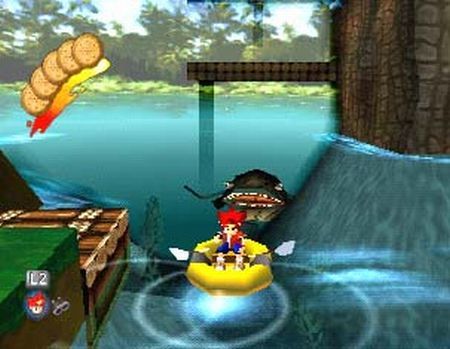
Excepting the car, though, I don’t think the stick adds as much as the developers had hoped. While some may find it more immersive, it comes at the cost of responsiveness. Common tasks like shooting the slingshot or boosting with the propeller are overly cumbersome because of the stick inputs. It’s hard not to think about how the gadgets could easily be mapped to buttons. Even swinging weapons in different directions is rarely useful. Comparing to Zelda once again, that game has fun combat swinging in just direction, while still including a spin attack. And the less said about Ape Escape’s vehicle sections, the better.
Ultimately, though, the worst part of this control scheme is what it does to the camera. It’s not exactly fair to expect this 20-year-old game to include the standardized dual-stick camera controls we can use in our sleep. Trying my best to put biases aside, I have to conclude that Ape Escape’s camera is just poor. Running around the game’s attractive environments with an analog stick feels great. At least, it does so long as you run directly north. The slightest hint of a different orientation will initiate a camera rotation. This rotation puts the camera not behind Spike, but in front of him. Should the player try to fight the camera’s movements with analog adjustments as they run, the struggle will continue until all parties are dizzy and aggravated. And all for wanting to travel in a straight line. Running towards the camera can work in controlled sequences, like in Crash Bandicoot, but this is a free-roam platformer. Seeing where you’re going is, you know, important.
The designated camera adjustment buttons are the D-pad. However, they are inverted, and only have utility while standing still. The instant Spike starts moving, the cameraman is right back on his bullshit. Using the D-pad and the analog stick at the same time seems physically impossible, so forgive me if that never occurred to me while playing. I swear, I must have pressed the button to recenter the camera more often than the jump button! Often multiple times just to walk from point A to B!! Dear reader, I promise you that I made every effort to determine if I had just missed something. I combed over every tutorial message I could find, searched fruitlessly in the options menu, and even consulted the game manual! But tragically, I could find no trace of better options for this camera system. Please let me know if one exists.

The worst part is that these fundamental issues are a massive barrier in a game that I would otherwise love. I’ve already mentioned the excellent portrayal of the apes, and their slapstick antics are enjoyable. Each having a name and factoid shows that the developers were willing to go the extra mile. The whole vibe of the game is Saturday morning goodness, with voice acting just good enough to not be bad. Every environment you visit is distinct and visually striking for the hardware. The “fake-out final level” is one of my pet peeves, but as the stages just get more and more inventive, it didn’t bother me one bit here. To top it all off, there are bonus minigames you can unlock for snagging extra collectibles!
It’s impossible not to see how much love was put into Ape Escape, which makes its issues all the more heartbreaking. Every part of me wants to recommend it, but the game has a hidden dark side that won’t make the experience easy. An N. Sane style repackaging with an acceptable camera could be just what the series needs. Technically, the monkeys I couldn’t collect are still out there, endangering society. Knowing that they break loose to do it all again in the sequel, it doesn’t seem like a priority.
Yoshi's Story

Mario’s carnivorous companion has experienced a number of ups and downs. Opinions are split on the first in the Yoshi sub-series, Yoshi’s Island. I’m pretty cold on it, but plenty of folks have it as one of their favorites. Lovers and haters alike, I struggle to think of anyone preferring its sequel. Yoshi’s Story makes so many strange decisions that I’m not sure where to begin.
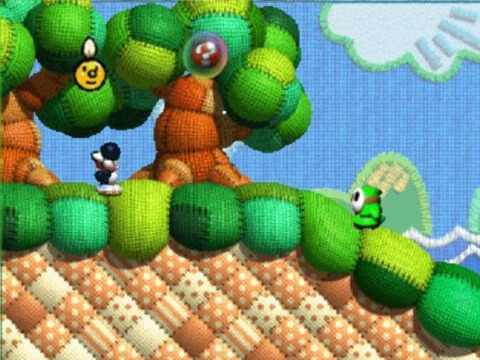
In appearance, Yoshi’s Story is much closer to Donkey Kong Country than Super Mario 64. It uses rendered sprites to attempt a 2.5D look. The game’s premise is that the island has turned into a storybook, and the environments are drawn accordingly. The cardboard landscapes will be familiar to anyone who has played early Super Smash Bros. games. There are some more creative examples as well, like a level background built from newspaper. Unfortunately, this style’s effect is mitigated because future Nintendo games have taken the concept much further. Yoshi’s Story crawled so his Crafted World could run, certainly. I still think I prefer the crayon drawing style of the previous game to this one’s faux-3D.
There is one strained comparison I can use to tie this game together with Ape Escape. Both have stages abruptly end when a fixed number of Things are collected! In Yoshi’s case, this is eating 30 pieces of fruit. You don’t have to get to the end of a level, he just decides he’s had enough for one day. But while each ape is a challenge in its own right, Yoshi is almost literally tripping over fruit for the entire adventure. His tongue fires at the speed of an assault rifle, and you are forced to watch as he fills up like the greedy gourmand he is.
Strictly speaking, not all fruit is created equal. Each color of Yoshi has his own favorite fruit which will award more points. A randomly selected lucky fruit will do the same. And the most dedicated Yoshi’s Story players will strive for the coveted “all-melon run,” though I have some questions for anyone who fits that description. The average player will just be snacking on whatever’s in front of them, the screen steadily filling with fruit until the raptor’s hunger is finally sated.
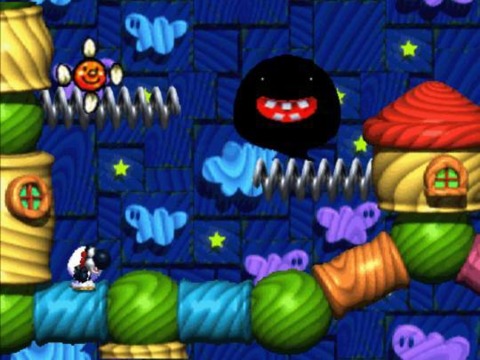
Despite my language, there’s no mistaking that Yoshi’s Story is far more relaxed than its predecessor. Later levels in Island could be quite demanding and demand twitch reflexes. That sort of challenge is absent from Story. Egg throwing returns, but it utilizes a slower free throw system instead of button timing. Yoshi’s trademark flutter jump also feels more forgiving. However, due to Yoshi controlling like a slippery eel in this game, it did me more harm than good. There are technically boss fights, but you would have already beat one in the time it took you to read this sentence. Mixed with the art style, these complaints are damning evidence for the tired argument that Nintendo only makes “kiddy games.” Speaking of which, this game does lack Baby Mario, which is a true blessing.
The strangest choice Nintendo made with this game comes from its length. In total, there are only 24 levels, which is already short for this type of game. Stranger still, you will only experience six in one playthrough. That’s right, you will only play one level in a given environment before moving to the next set. There are up to four options in each chapter, but to have access to all of them, you must explore the previous level for giant hearts.
An average playthrough will end at well under an hour in all its underwhelming glory. Your score will be tallied and ranked on a leaderboard. That, and the mechanic of picking levels, funnels into a game that desperately encourages repeat playthroughs. The question is, why was this system chosen? Most would find it much more satisfying to play all the levels in a single playthrough. As it is, the adventure feels quaint and inconsequential. Part of me wants to think that Nintendo tried to push replayability to mask the game’s shortness. Another part must acknowledge that Nintendo making unconventional choices for no reason at all is completely in character. No matter the cause, it didn’t pay off, and is likely why so many players left the game wanting more.
As a last note, I should mention the sound. Baby Mario may be absent, but his cries have a successor. This game was the first to give Yoshi his iconic voice courtesy of composer Kazumi Totaka. The same voice clips remain in use decades later, up to this very day. It’s hard to imagine Yoshi without Totaka’s pitched noises, but he is often too vocal for his own good. The Yoshi choir that serenades you after every level is already ear-splitting. Realizing that Totaka created this atonal group using himself leads me to a dark rabbit hole I’m not sure I want to see the end of.

Yoshi’s Story is such a bizarre change in direction for the series that every question just leads to ten more. It is a marginally fun game, but so many better options exist that it’s hard to recommend. Even for Nintendo 64 fanatics, it’s fair to say you won’t miss much by skipping this one.
Klonoa: Door to Phantomile
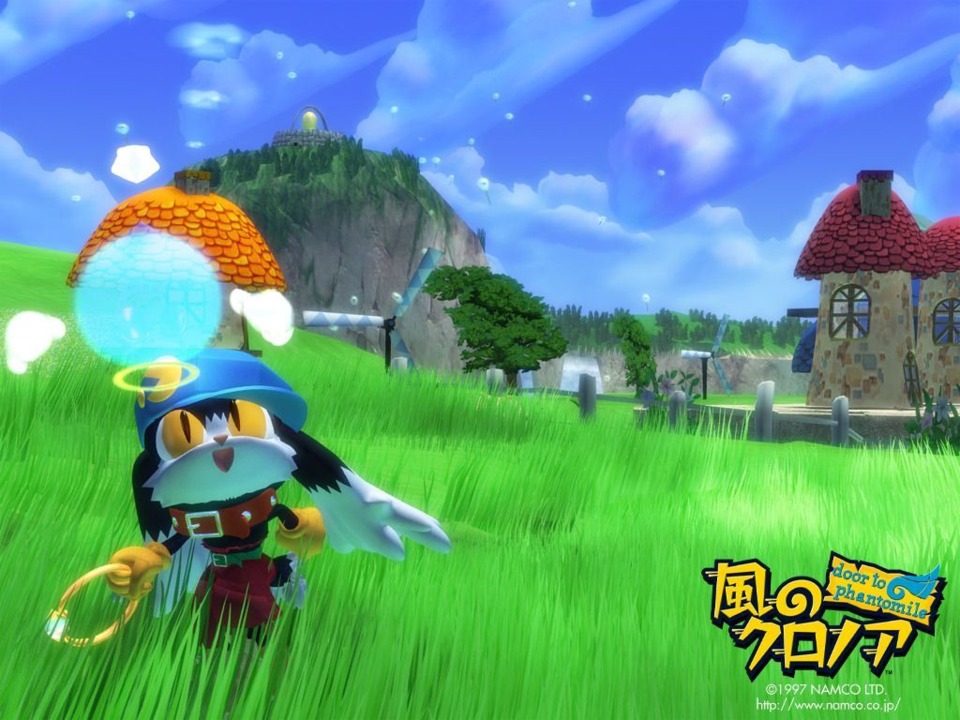
Somewhere between Namco’s glory days in the arcade era and their anime-centric existence today lies a little series called Klonoa. This rabbity thing is another example of an early 2.5D game, but it’s much more successful in its execution. Klonoa will always move on a 2D plane, but the path will curve and split in ways that take advantage of the third dimension. The result is dioramic levels that nonetheless feel like real places inside Klonoa’s world. You may see level elements in the background that will be explored minutes later. Later stages have branching paths that credibly link up and crisscross each other. This style of level construction works beautifully, yet I struggle to think of many examples of it in other games.
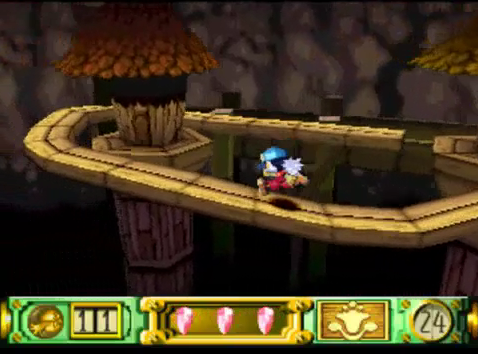
Anodyne 2 turned me on to artisanal low-poly graphics, and as a result, Klonoa is a joy to look at. The environments have just enough detail to not feel lacking, but they retain the charm of simplicity. There is also good variety in locations, so no one area gets stale. Detailed character sprites fit in great. I think this art style has aged wonderfully, and I would like to see it in a modern game.
Klonoa’s main skill is grabbing enemies and throwing them in several directions. He can toss them along the 2D plane, downwards for a double jump, and even into the foreground and background. The challenge curve escalates nicely throughout the game, and the required feats never feel impossible. What’s more, enemies will repopulate when they are needed to progress, covering for missed shots. It is a fairly simple mechanic, but it never becomes boring.
Klonoa also has a flutter jump that’s fairly weaker than Yoshi’s. It’s rarely required to extend jumps, instead serving to correct them. The character already feels very responsive, and the flutter makes platforming that much easier. Though Klonoa has even less levels than Yoshi’s Story, it definitely feels more like an adventure. Both games are presented as chapters in a book, but Klonoa’s world is more connected and built out.
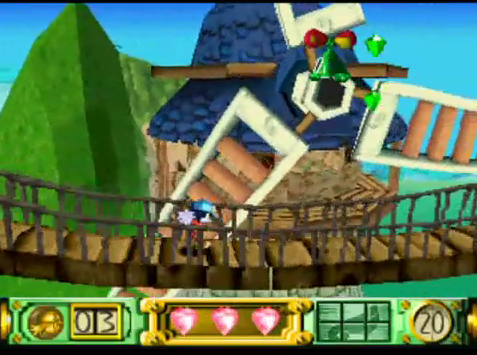
Unfortunately, my praise has to stop with Klonoa’s story. It certainly goes for something more than these other two games, but it doesn’t hit the mark. Level 1-1 starts as expected, a happy-go-lucky frolic set to a saccharine score. By halfway through, the dramatic stakes have skyrocketed. The game attempts to pull at your heartstrings in a way that wasn’t indicated previously. To be fair, it gives the antagonist more gravitas, but it’s still an unexpected turn.
Of course, anyone who’s beaten Klonoa is aware of the game’s infamously tragic ending. Even the most hardened of hearts will feel something. The issue with the ending comes again from it being so removed from the game’s outward appearance. Please don’t misunderstand – I have no problem with “cute” stories exploring darker themes. But the question must be asked, what does the ending contribute to the story as a whole?
Other than a talking point, it isn’t much. The ending is clumsily foreshadowed, but the entire reveal and consequence of Klonoa being from another world takes place well into the denouement. The revelation is crammed into the last three minutes before the credits, making it come pretty much out of nowhere. One way to fix this would be placing the reveal before the final boss. The player would then have to contend with this knowledge while part of the game still remains. It would also give the final boss more stakes. As it is, the abrupt twist seems thrown in just because, or to give people something to talk about.
The saddest part of the ending is that it necessitates leaving the world for good. With the sequel dropping the aesthetic elements that appeal so much to me, it loses a lot of flair. In general, the series never seemed to catch on in the way Namco hoped. It wouldn’t be an outrageous claim to label Klonoa a “failed mascot,” but his first adventure remains a great game that could only exist in this generation between dimensions. I hope Klonoa’s spirit is carried forward in some way, so that he may escape his lonely fate.
Log in to comment